The peepal tree is considered the mythical ‘Tree of Life’ or ‘World Tree’ in the Indian subcontinent. It is also called Ficus religiosa, belonging to the family Moraceae, and is a variation of the fig tree known as the bodhi tree. The word ‘Ficus’ in Latin refers to ‘fig’, the fruit of the tree, and the word ‘Religiosa’ refers to ‘religion’, as it is sacred in both Buddhism and Hinduism1. Also, for this reason, it is named ‘Sacred fig’. It is a huge tree often planted near holy places and temples.
The vernacular names of peepal trees are Pipal, Pipala in Hindi; Jari, Piplo, Pipalo, Piparo in Gujarati; Pimpal, Pipal, Pippal in Marathi; Ashud, Ashvattha, Asvattha in Bengali; Aswatha in Oriya; Ahant in Assamese; Pippal, Pipal in Punjabi; Ravichettu in Telugu; Arara, Arasu, Arasan, Ashwarthan, Arasamaram in Tamil; Ranji, Arlo, Basri, Ashwatha, Ashvatthanara, Aralegida, Aralimara, Basari, Ashvathamara, Ashvattha in Kannada; Arayal in Malayalam; Bad in Kashmiri.
Traditionally, the leaf juice of the peepal tree may be helpful for cough, asthma, diarrhoea, ear pain, toothache, haematuria (blood in urine), migraine, scabies, eye troubles, and gastric problems. The stem bark of the peepal tree might help with paralysis, gonorrhea, bone fractures, diarrhoea, and diabetes. However, more studies are required to prove the potential use of benefits for the purposes mentioned above. Furthermore, it should not be used for self-medication.
The nutritional composition of parts of the peepal tree (per 100 g) is3:
| Nutrient | Fresh Fruits | Dried Fruits | Leaves | Bark |
| Carbohydrates | 21.2 g | 68.33 g | 19.20 g | 15.4 g |
| Proteins | 2.5 g | 8.48 g | 13.55 g | 2.5 g |
| Fats | 1.7 g | 0.143 g | 2.5 g | 1.7 g |
| Crude fibre | 9.9 g | – | 26.1 g | 9.9 g |
| Dietary fibre | – | 69.43 g | – | – |
| Calcium | 289 mg | 848 mg | 1.67 mg | 16.1 mg |
| Iron | – | 6 mg | 0.18 mg | 623 mg |
| Copper | – | – | 0.105 mg | – |
| Manganese | – | – | 0.355 mg | – |
| Zinc | – | – | – | 0.09 mg |
In my practice, I have observed that the methanolic extract of Peepal stem bark has shown an inhibitory effect on the enzyme acetylcholinesterase. Since this enzyme is responsible for the metabolism of the chemical acetylcholine. This suggests that it may have potential benefits in the treatment of Alzheimer’s disease by increasing levels of the neurotransmitter acetylcholine in the brain, which is important for memory and cognitive function5.
Dr. Rajeev Singh, BAMS
The Peepal tree might have the following therapeutic properties2:
Peepal trees might have the following potential uses for human health:
However, more studies are required to prove such claims. Kindly ensure that you consult a doctor as such conditions should be diagnosed and treated by a doctor.
However, more research is required to prove the use of peepal trees for the heart. Conditions of the heart are serious. Therefore, you should consult a doctor. Only a doctor should diagnose and treat heart diseases.
Kindly do not use it for self-medication.
However, more studies are required to prove such claims. Kindly ensure that you consult a doctor as such conditions should be diagnosed and treated by a doctor.
However, more research is required to prove the potential uses of peepal trees for the skin. Therefore, kindly consult a doctor.
However, more research is required to prove such claims. Therefore, you should consult a doctor.
However, make sure that you consult a doctor before putting anything in your ear. Please do not self-medicate. Kindly consult a doctor as ear problems can be serious.
Though there are studies that show the potential uses of peepal trees in various conditions, these are insufficient and there is a need for further studies to establish the true extent of the benefits of peepal trees on human health.
In my experience, I have observed that Ficus religiosa latex has shown hepatoprotective effects in cases of liver injury induced by cisplatin. It helped in reducing the elevated levels of liver enzymes and improving the liver cell degeneration, inflammation, and necrosis. This suggests that Ficus religiosa latex may have potential benefits in protecting the liver from drug-induced damage5.
Dr. Smita Barode, B.A.M.S, M.S.
Peepal tree can be used as:
You must consult a qualified doctor before taking any herbal supplements. Do not discontinue or replace an ongoing treatment of modern medicine with an ayurvedic/herbal preparation without consulting a qualified doctor.
There is a need for more research to ascertain the potential use and side effects of peepal trees. It might have unknown side effects. Therefore, it is advised to consult your doctor before taking parts of the peepal tree.
Based on my experience, I have observed that the methanolic extract of Ficus religiosa bark may exhibit a potent anti-parasitic effect. This anti-parasitic effect of the methanolic extract of Ficus religiosa bark may be attributed to the presence of bioactive compounds within the extract. These compounds are likely to have properties that are toxic or detrimental to the parasites, leading to their lethality5.
Dr. Siddharth Gupta, B.A.M.S, M.D (Ayu)
General precautions should be followed before taking parts of the peepal tree, especially by pregnant women, breastfeeding mothers, children, and elderly individuals. Therefore, before taking the powdered bark or any other part of the tree, it is advisable to consult your doctor. Kindly do not self-medicate, alter, replace, or discontinue any ongoing treatment by yourself.
Parts of the peepal tree might have unknown interactions with drugs. There is insufficient data regarding interactions with other drugs. Therefore, there is a need for more studies to be conducted. You should consult a doctor before using parts of the peepal tree for its benefits. You should also ensure to disclose the current medications being used so that the doctor can have a clear picture and provide accurate guidance.
The powdered bark of the peepal tree may be applied with sesame oil for dealing with wounds if suggested by an Ayurvedic physician. Also, its stem bark can be boiled in water, and the lukewarm decoction may be used in infected and non-infected wounds, as it might help in healing. The root bark fine powder of the peepal tree may be used for dusting over the oozing lesion to manage it. However, these methods are not to be used without the prescription and consultation of an Ayurvedic physician.
Fresh latex of the peepal tree might help with hyperpigmentation of the face. However, more studies are required to prove the use of peepal trees for hyperpigmentation. Moreover, ensure that you consult a doctor before using it.
The powder from the dried fruit mixed with water might be helpful for asthma. However, more studies are required. Asthma is a serious condition and should be diagnosed and treated by a doctor. Therefore, kindly ensure that you consult a doctor.
A cold infusion or decoction of the bark might have potential use for healthy gums and might help with toothache. However, it is not advisable to use herbs on your own as the studies available are insufficient to suggest their benefits to humans. Kindly consult a dentist.
There is insufficient data regarding this subject. Kindly consult a doctor and do not self-medicate.
The fruits of the peepal tree might be helpful for constipation. Kindly consult a doctor and do not self-medicate.
The leaves of the peepal tree may be coated with ghee, warmed, and applied over the inflamed area of mumps; this may or may not be helpful. It should not be used without the recommendation of an Ayurvedic physician. Kindly consult a doctor for the diagnosis and treatment of mumps. Do not self-medicate.
The peepal tree is called ‘Sacred fig’ because it is believed to be sacred by the followers of Hinduism, Buddhism, and Jainism.
There is insufficient data regarding the use of peepal tree parts during pregnancy. Therefore, you must consult your doctor before taking it.
It can be used as powdered dried leaves, powdered dried bark, raw leaves juice, dried fruit or decoction of bark. However, you should not use it without the consultation of a doctor. Therefore, make sure that you consult a doctor.
Disclaimer: The information provided here is for educational/awareness purposes only and is not intended to be a substitute for medical treatment by a healthcare professional and should not be relied upon to diagnose or treat any medical condition. The reader should consult a registered medical practitioner to determine the appropriateness of the information and before consuming any medication. PharmEasy does not provide any guarantee or warranty (express or implied) regarding the accuracy, adequacy, completeness, legality, reliability or usefulness of the information; and disclaims any liability arising thereof.
Dashmularishta is a widely used Ayurvedic tonic prepared using roots of ten different plants, thus the term ”dasha”, meaning ten. According to Sarngadhara Samhita1 (a well-known Ayurvedic textbook), Dashmularishta has the power to restore the body from an inflammatory condition to good health by rebuilding the tissues and revitalising the body. It is thought to be a wonderful tonic for women during the prenatal and peri-menopausal phases. We are going to discuss the various Dashmularishta uses and benefits in this blog.
Dashmularishta has been conferred with various therapeutic uses in Ayurvedic medicine due to the combined effect of the herbs. The herbs used are:
Dashmularishta is an ayurvedic tonic with a wealth of therapeutic benefits3. Some of the Dashmularishta traditional uses and properties are listed below:
Osteoarthritis is a common progressive condition of weight-bearing joints, mainly the hips and knee joints. Osteoarthritis is significantly seen in the older population, and it is regarded as the leading cause of disability among them. Dashmularishta is considered one of the best additions to osteoarthritis therapy and may help reduce the inflammation and pain caused by joint inflammation. In animal studies2, Dashmularishta was proven to significantly reduce swelling and improve the ability to take longer steps.
Dashmularishta may help reduce the pain caused due to arthritis4. Oroxylum indicum, one of the primary ingredients of Dashmularishta, is well known for its pain-relieving property3. Animal studies2 indicate Dashmularishta benefits in osteoarthritis by potentially slowing the onset of stimuli that induce pain, preventing the pain itself. On further investigations, it may also prove effective in humans.
In Ayurveda, the herbal decoction called Dashmularishta is beneficial to manage heart diseases. Some ailments, like heart attack and stroke, are caused by the clotting of blood. Dashmularishta may act against the clotting property of platelets, which makes it an excellent agent to prevent blood clots and prevent heart attack and stroke. It may be used along with allopathic medicines for heart diseases5.
In my opinion, Dashmularishta is the ultimate body superhero. This awesome tonic made from a blend of powerful herbs may work wonders for your body. It’s like a detox and nourishment combo all in one. It may help to remove toxins and might nourish your precious body tissues11.
Dr. Rajeev Singh, BAMS
In Ayurveda, Bala roga (Paediatric conditions) in breastfed babies are managed by examining both mothers and babies. It is believed that any irregularity in the mother’s diet or her physiology may manifest in the child as allergic conjunctivitis. Hence, the infant’s mother with allergic conjunctivitis is given Dashmularishta to manage the irregularities in appetite and bowel movements. The infant may be given appropriate remedies depending on the symptoms, and Dashmularishta is considered a safe remedy for nursing mothers as well6.
For mothers who are breastfeeding, I would suggest trying Dashmularishta if you’re having trouble with your milk supply. This incredible tonic might work wonders in increasing milk production in women11.
Dr. Smita Barode, B.A.M.S M.S.
Also Read: Harad: Uses, Benefits, Side Effects, and More!
Dashmularishta is an ayurvedic tonic prescribed by the physician to be taken as directed.
Your Ayurvedic physician will prescribe you the form and dosage as per your health condition.
I would recommend Dashmularishta if you’re looking to go the extra mile during physical exercises. In a study10, it was found that it might actually boost your swim endurance and help you fight off fatigue. Talk about an antifatigue superstar!
Dr. Siddharth Gupta, B.A.M.S, M.D (Ayu)
No adverse side effects have been documented due to the administration of Dashmularishta9.
Also Read: Chandraprabha Vati (Chandraprabha Gulika): Uses, Benefits, Side Effects, Precautions & More!
Dashmularishta truly stands out as a versatile herbal tonic with numerous benefits for the body and mind. Whether you’re looking to reduce inflammation, support women’s health, or boost your overall vitality, Dashmularishta offers a natural way to nourish and strengthen your body. Remember, while it has been used safely for centuries, it’s always best to check with an Ayurvedic doctor to get the right dosage and guidance tailored for you.
Yes, Dashmularishta might improve the hormonal imbalance in women and rectify the menstrual period. This can improve the period cycle to a significant extent and restore it to health.
There have been no documented benefits of Dashmularishta specifically for men.
There have been no documented benefits of Dashmularishta in weight loss.
Dashmularishta might improve ovarian function by rectifying the hormonal imbalance that prevents one from conceiving. PCOS is a major cause of infertility in women. Dashmularishta is an ayurvedic medication that is an excellent remedy for PCOS and other gynaecological disorders. Thus, Dashmularishta is found to help conceive women with gynaecological disorders by improving the hormonal levels and preventing any related metabolic disorders.
Please consult your Ayurvedic doctor for appropriate prescriptions and directions. Your doctor will prescribe you a specific dosage depending on your symptoms.
No specific benefits of Dashmularishta have been documented for hair growth.
No specific benefits of Dashmularishta have been documented for the skin.
1. Pawar Nayana, Kogje Anushri, Bhondave Prashant, Nagarkar Bhagyashri, Kulkarni Omkar, Harsulkar Abhay, et al. Comparative free radical scavenging and anti-inflammatory potential of branded market samples of Ayurvedic formulations: Dashmoolarishta. International Journal of Pharma and Bio Sciences [Internet]. 2013 Jan [cited 2022 Mar 4];4(1):789–99. Available from: https://www.researchgate.net/publication/234877712_Comparative_free_radical_scavenging_and_anti-inflammatory_potential_of_branded_market_samples_of_Ayurvedic_formulations_Dashmoolarishta
2. Shetty YC, Godbharle S, Brahma S, Salgaonkar S, Rege NN. Evaluation of oral multi-herbal preparation of Dashmoolarishta on mice model of osteoarthritis. J Basic Clin Physiol Pharmacol [Internet]. 2017 Jun 21 [cited 2022 Mar 4]; Available from: https://www.researchgate.net/profile/Yashashri-Shetty/publication/32044759
3. Ahad Amjid, Ganai Ajaz, Zeeshan Najm Mohammad. Therapeutic potential of Oroxylum indicum: A review. Journal of Pharmaceutical Research and Opinion [Internet]. 2012 [cited 2022 Mar 4];163–72. Available from: https://www.researchgate.net/publication/285800921_Therapeutic_potential_of_Oroxylum_indicum_A_review
4. Reshma R. Parekar, Kumar K. Dash, Aditi A. Apte, Nirmala N. Rege. EVALUATION OF ANTI-INFLAMMATORY ACTIVITY OF ROOT BARK OF CLERODENDRUM PHLOMIDIS IN EXPERIMENTAL MODELS OF INFLAMMATION. International Journal of Applied Biology and Pharmaceutical Technology [Internet]. 2012 [cited 2022 Mar 4];3(3). Available from: https://www.researchgate.net/publication/327931225_EVALUATION_OF_ANTI-INFLAMMATORY_ACTIVITY_OF_ROOT_BARK_OF_CLERODENDRUM_PHLOMIDIS_IN_EXPERIMENTAL_MODELS_OF_INFLAMMATION
5. Parekar RR, Bolegave SS, Marathe PA, Rege NN. Experimental evaluation of analgesic, anti-inflammatory and anti-platelet potential of Dashamoola. Journal of Ayurveda and Integrative Medicine [Internet]. 2015 Jan 1 [cited 2022 Mar 4];6(1):11. Available from: https://www.ncbi.nlm.nih.gov/pmc/articles/PMC4395922/
6. Shantala Priyadarshini, Teragundi Panaga, Gangadkar Pooja. Ayurveda Management of Allergic Conjunctivitis in 6 months old baby- A successful case study . International Journal of AYUSH Case Reports [Internet]. 2020 [cited 2022 Mar 4];4(2). Available from: https://ijacare.in/index.php/ijacare/article/view/145
7. Nagarkar B, Mohite S, Kapoor E. EVALUATION OF EFFICACY OF DASHMOOLARISHTA IN CERVIVITIS: A PROOF-OF-CONCEPT STUDY. Article in Journal of Pharmacy and Pharmaceutical Sciences [Internet]. 2014 [cited 2022 Mar 4];3(6). Available from: https://www.researchgate.net/profile/Bhagyashri-Nagarkar/publication/264252846
8. Narayan Karandikar Ashwini. PCOS WITH INFERTILITY AND ITS AYURVEDA MANAGEMENT – A CASE STUDY [Internet]. International Journal of Ayurveda and Pharma Research. 2018 [cited 2022 Mar 4]. Available from: http://www.ijaprs.com/index.php/ijapr/article/view/1040
9. Dwivedi M, Sastry JLN, Rai RK, Vedula S. Clinical Evaluation of Dashmularishta (Ayurvedic formulation) in Restoring Normal Health of Postpartum Females . Journal of research in Traditional Medicine [Internet]. 2016 [cited 2022 Mar 7]; Available from: https://tmjournal.org/fulltext/140-1505301334.pdf?1646640147
10. Gupta A, Madaan A, Srivastava R, Kumar S, Sastry JLN. Evaluation of antioxidant, immunostimulatory and antifatigue properties of Dashmularishta using in vitro and in vivo assays. Indian J Exp Biol. 2018 Aug;56(8):598–603. Available from: https://www.researchgate.net/publication/327269604_Evaluation_of_antioxidant_immunostimulatory_and_antifatigue_properties_of_Dashmularishta_using_in_vitro_and_in_vivo_assays
11. Jalwal NK, Pawan, BK. Formulation and evaluation of tablet of a classical fermented preparation of Dashmularishta. Int J Pharm Sci Res. 2015 Mar 31;6(3):123–8. Available from: https://www.semanticscholar.org/paper/Formulation-and-Evaluation-of-tablet-of-a-Classical-N.-Jalwal/8a2e9c631a4ea975f652d33cacee6aae32225318
Disclaimer: The information provided here is for educational/awareness purposes only and is not intended to be a substitute for medical treatment by a healthcare professional and should not be relied upon to diagnose or treat any medical condition. The reader should consult a registered medical practitioner to determine the appropriateness of the information and before consuming any medication. PharmEasy does not provide any guarantee or warranty (express or implied) regarding the accuracy, adequacy, completeness, legality, reliability or usefulness of the information; and disclaims any liability arising thereof.
Arjunarishta, also known as Parthadyarishta, is a hydroalcoholic formulation of the herb Terminalia arjuna belonging to the Combretaceae family1. It is consumed as a herbal decoction. Arjunarishta is made up of fresh stem bark of Arjuna (Terminalia arjuna), Madhuka (Madhuka indica), Draksha (Vitis vinifera), Dhataki (Woodfordia fruticosa), and Jaggery (Saccharum officinarum). Among these, Arjuna constitutes the highest proportion. It is formulated via a fermentation process that generates alcohol. This alcohol acts as a preservative as well as a solvent2.
Arjuna bark contains many phytochemicals, triterpenoids, glycosides, flavonoids, tannins, beta-sitosterol, minerals, and trace elements6.
Various phytochemicals present in Arjunarishta may provide many health benefits. Phytochemicals like flavonoids, glycosides, phenolic acids, and triterpenoids possess antioxidant effects and free radical scavenging ability that can reduce inflammation.
However, more research is needed to understand their efficacy in treating cancer in humans.
Traditional uses of Arjunarishta are obtained mainly from its bark. The renowned ancient physician Chakradatta advised administering it as a bark decoction with milk or as a ghrita. It has been observed that consuming a decoction of bark might help in reducing headaches, earache and heart ailments. Dried bark powder mixed with rice water might help in reducing blood in the urine1.
Dr. Rajeev Singh, BAMS
As per the Ayurvedic Pharmacopoeia of India, Arjunarishta is to be taken after meals with water1. Dosage should be prescribed by an Ayurvedic physician based on individual health needs.
Also Read: Drumstick (Sahjan): Uses, Benefits, Side Effects and More!
Mentioned in ancient Indian medicinal texts like Charaka Samhita, Sushruta Samhita and Ashtanga Hridayam, Arjunarishta might hold ultimate medical value in managing cardiovascular diseases. Vagabhatta was the one who originally suggested using stem bark powder for heart conditions1.
Dr. Siddharth Gupta, B.A.M.S M.D (Ayu)
There is a lack of data regarding the interaction of Arjunarishta with other drugs. Therefore, patients are advised to talk to a doctor about its usage if they are already using any other medication or supplement.
Arjunarishta is a hydroalcoholic formulation of the herb Terminalia arjuna belonging to the Combretaceae family. Arjunarishta is composed of fresh stem bark of Arjuna, Madhuka (Madhuka indica), Draksha (Vitis vinifera), Dhataki (Woodfordia fruticosa) and Jaggery (Saccharum officinarum).
Arjunarishta contains many phytochemicals that act as antioxidants. Phytochemicals like flavonoids, glycosides, phenolic acids, and triterpenoids show antioxidant effects and free radical scavenging ability. Arjunarishta is used in hypertension. Other therapeutic uses of Arjunarishta are in lung disorders, heart diseases, azoospermia, loss of strength, and immunity.
Arjunarishta is known to contain alcohol, which is self-generated during the fermentation process.
There are no safety studies pertaining to its usage in children. Arjunarishta is known to contain alcohol, which is self-generated during the fermentation process. Thus, it should be used in children only after clear consultation with an Ayurvedic physician.
Arjunarishta is an Ayurvedic formulation made from the fresh stem bark of Arjuna (Terminalia arjuna), Madhuka (Madhuka indica), Draksha (Vitis vinifera), Dhataki (Woodfordia fruticosa), and Jaggery (Saccharum officinarum).
Consumption of arjuna is associated with mild side effects like body aches, headaches, gastritis, and nausea. Consuming arjuna plant extract, which is the key component of Arjunarishta, may lead to liver toxicity and hypothyroidism if consumed in excess without proper guidance.
Arujunarishta nourishes and strengthens the muscles of the heart. It promotes heart functioning by regulating blood cholesterol and blood pressure. The chief constituent of Arjunarishta, Arjuna, is beneficial in relieving angina pain, in the treatment of coronary heart disease and heart failure.
There are no safety studies pertaining to its usage in pregnant and breastfeeding women. Therefore, it should be used with the doctor’s advice and supervision.
There are no safety studies about its usage in pregnant and breastfeeding women. Therefore, it should be used with the doctor’s advice and supervision. There are no safety studies about its usage in children. Arjunarishta is known to contain alcohol, which is self-generated during the fermentation process.
Arujunarishta nourishes and strengthens the muscles of the heart. It promotes heart functioning by regulating blood cholesterol and blood pressure. The chief constituent of Arjunarishta, Arjuna is beneficial in relieving angina pain, in the treatment of coronary heart disease and heart failure.
Arjunarishta shows benefits in improving heart health, but it should not be used as a cure for any heart disease without consultation of a qualified doctor, or as an alternative to conventional medicines.
1. Dwivedi S, Chopra D. Revisiting Terminalia arjuna – An Ancient Cardiovascular Drug. Journal of traditional and complementary medicine [Internet]. 2014 Oct 1 [cited 2022 Feb 17];4(4):224–31. Available from: https://pubmed.ncbi.nlm.nih.gov/25379463/
2. Effect of Terminalia arjuna stem bark on antioxidant status in liver and kidney of alloxan diabetic rats – PubMed [Internet]. [cited 2022 Feb 17]. Available from: https://pubmed.ncbi.nlm.nih.gov/17051732/
3. Sivalokanathan S, Vijayababu MR, Balasubramanian MP. Effects of Terminalia arjuna bark extract on apoptosis of human hepatoma cell line HepG2. World J Gastroenterol. 2006 Feb 21;12(7):1018-24. doi:10.3748/wjg.v12.i7.1018. PMID: 16534840; PMCID: PMC4087891. Available from: https://www.ncbi.nlm.nih.gov/pmc/articles/PMC4087891/
4. Grace Nirmala J, Evangeline Celsia S, Swaminathan A, Narendhirakannan RT, Chatterjee S. Cytotoxicity and apoptotic cell death induced by Vitis vinifera peel and seed extracts in A431 skin cancer cells. Cytotechnology [Internet]. 2018 Apr 1 [cited 2022 Feb 22];70(2):537–54. Available from: https://pubmed.ncbi.nlm.nih.gov/28983752/
5. Shengule SA, Mishra S, Joshi K, Apte K, Patil D, Kale P, et al. Anti-hyperglycemic and anti-hyperlipidaemic effect of Arjunarishta in high-fat fed animals. J Ayurveda Integr Med. 2018 Jan-Mar;9(1):45-52. doi:10.1016/j.jaim.2017.07.004. PMID: 29249636; PMCID: PMC5884182. Available from: https://www.ncbi.nlm.nih.gov/pmc/articles/PMC5884182/
6. Amalraj A, Gopi S. Medicinal properties of Terminalia arjuna (Roxb.) Wight & Arn.: A review. J Tradit Complement Med. 2016 Mar 20;7(1):65-78. doi:10.1016/j.jtcme.2016.02.003. PMID: 28053890; PMCID: PMC5198828. Available from: https://www.ncbi.nlm.nih.gov/pmc/articles/PMC5198828/
Disclaimer: The information provided here is for educational/awareness purposes only and is not intended to be a substitute for medical treatment by a healthcare professional and should not be relied upon to diagnose or treat any medical condition. The reader should consult a registered medical practitioner to determine the appropriateness of the information before consuming any medication. PharmEasy does not provide any guarantee or warranty (express or implied) regarding the accuracy, adequacy, completeness, legality, reliability or usefulness of the information; and disclaims any liability arising thereof.
Three medicinal herbs make up Triphala (in Sanskrit, “tri” means “three” and “phala” means “fruits”). It is an antioxidant-rich herbal preparation described as a Rasayana (rejuvenator) medicine by Ayurvedic practitioners. Combining the three fruits is said to be responsible for Triphala’s numerous health benefits1.
Triphala is made from the dried fruits of:
The spring-harvested fruits of Terminalia chebula are high in tannins such as gallic acid, ellagic acid, chebulic acid, chebulinic acid, chebulagic acid, neochebulinic acid, corilagin, terchebin, punicalagin, terfavin, flavonoids (rutins, luteolin and quercetin), starches, amino acids (glutamic acid, aspartic acid, lysine, arginine and proline), β-sitosterol, succinic acid, fructose and fatty acids2.
The fruits of Terminalia bellerica consist of proteins and oils that include omega-3 and omega-6 fatty acids (linoleic acid). Because of its high fatty acid content, this plant can impact cholesterol levels, increasing high-density lipoprotein levels (good cholesterol) while decreasing low-density lipoprotein levels (bad cholesterol), making it effective in treating coronary artery disease.
Phyllanthus emblica (amla) fruits are high in ascorbic acid, i.e. vitamin C2. The high density of tannins may contribute to the overall bitterness of amla. These fruits also include punicafolin and phyllanemblinin A, phyllemblin, and other polyphenols such as gallic acid, ellagic acid, flavonoids and kaempferol2.
Based on my experience, I have come across evidence suggesting that Amalaki, which is a component of Triphala, may possess properties to manage diseases of the sense organs and enhance memory. It is believed that the active compounds present in Amalaki exert beneficial effects on the central nervous system, potentially improving sensory function and memory.
Dr. Siddharth Gupta, B.A.M.S, M.D (Ayu)
Triphala is described as a tridoshic Rasayana in Ayurveda, capable of balancing and rejuvenating the three doshas that regulate human life: Vata, Pitta and Kapha. It is widely used in several disease conditions owing to its following properties1,3:
Triphala is used to treat fatigue, oxidative stress, and infectious disorders like tuberculosis, pneumonia, AIDS and periodontal disease, among others. It’s also used for headaches, dyspepsia, ascites and leukorrhea3.
In my experience, I have observed that Triphala, a herbal formulation, may have the ability to increase the number of red blood cells and improve haemoglobin content in the body, making it potentially beneficial for managing anaemia. The active compounds in Triphala are believed to stimulate the production of red blood cells, leading to an increase in haemoglobin levels and overall improvement in anaemic conditions.
Dr. Rajeev Singh, BAMS
Over the years, I have observed that Triphala, a herbal formulation, might have growth inhibitory activities against certain bacterial strains commonly found in HIV-infected patients. Studies have indicated that the aqueous and ethanolic extracts of Triphala, as well as its individual plant components, have shown potential antibacterial effects against these bacterial isolates.
Dr. Smita Barode, B.A.M.S, M.S.
Haritaki, bibitaki, and amlaki are powdered to make Triphala churna (powder). As per research, it is advisable to take it with ghee, honey, or milk1.
It is made by combining the powder with water and boiling it. The decoction is then filtered through a clean cloth, and the filtrate can be used to treat skin conditions like erysipelas, eruptions, scrotal enlargement, colic pain, worm infestation, and urinary diseases. It is applied directly to open wounds and eyes, as well as gargled during pharyngitis1.
It is made by boiling Triphala powder with oil. It is used as a gargle, snuff, an enema, and orally to treat obesity and itching1.
It’s made by heating Triphala powder for a long time at a low temperature in a controlled setting. Mashi/Masi is an intermediate product containing organic and inorganic ingredients. The mashi is black and has a high carbon and oxide content. Triphala Mashi, when mixed with honey, can be used to treat soft chancres and wounds1.
It is made by cooking the paste of Triphala, trikatu (a herbal compound of Indian Long Pepper (Piper longum), Black Pepper (Piper nigrum), and Ginger (Zingiber officinale) in ghee and milk, as well as grapes (Vitis vinifera), Yestamadhu (Glycyrrhiza glabra), Kutki (Picrorhiza korroa), and cardamom (Elettaria cardamom). It is frequently used to treat eye conditions like conjunctivitis, blindness, and cataracts. Triphala gritha is also used to treat jaundice, leucorrhoea, tumours, greying, and hair loss1.
Terminalia chebula: It should not be used if you have an acute cough, diarrhoea, or early-stage dysentery5.
Triphala is an ayurvedic herbal formulation made up of dried fruits from three different plants: Terminalia chebula (black myrobalan), Terminalia bellerica (bastard myrobalan), and Phyllantus emblica (emblic myrobalan)2.
It is suggested that Triphala churna can be taken with ghee, honey, or milk1.
Yes, we can take Triphala churna with milk1.
The Triphala gritha is made by boiling the Triphala paste in ghee and milk. It is frequently used to treat eye conditions like conjunctivitis, blindness, and cataracts1.
Triphala churna has analgesic, antibacterial, anti-arthritic, hypoglycemic, antiaging, antiviral and anti-inflammatory properties. It helps with headaches, dyspepsia, fatigue, oxidative stress reduction, and infectious disorders like tuberculosis and periodontal disease3. It is also used for eye problems such as infections, blindness, myopia, and cataractogenesis1.
Yes, Triphala is good for the liver as it reduces pro-inflammatory chemicals, restores the levels of antioxidant enzymes, and reduces liver damage, as seen by lower serum enzyme values1.
It is made by grinding haritaki, bibitaki, and amlaki1.
Triphala is an ayurvedic herbal formulation made up of dried fruits from three different plants: Terminalia chebula (black myrobalan), Terminalia bellerica (bastard myrobalan), and Phyllantus emblica (emblic myrobalan or Indian gooseberry)2.
Triphala restores antioxidant enzyme levels in experimental animals, resulting in an 80% reduction in cataract formation1. Thus, it might be helpful in improving eyesight in humans, but more studies are needed to prove the same.
Yes, Triphala is good for hair. It is considered to help with hair greying and hair loss1.
Disclaimer: The information provided here is for educational/awareness purposes only and is not intended to be a substitute for medical treatment by a healthcare professional and should not be relied upon to diagnose or treat any medical condition. The reader should consult a registered medical practitioner to determine the appropriateness of the information and before consuming any medication. PharmEasy does not provide any guarantee or warranty (express or implied) regarding the accuracy, adequacy, completeness, legality, reliability or usefulness of the information; and disclaims any liability arising thereof.
Ayurveda is an ancient Indian medical system. Ayurveda means the science or knowledge of life, where ‘Ayur’ means life and ‘Veda’ means knowledge.
The Ancient and Traditional practice of Ayurvedic is 5,000 years old and works on three basic three principles or doshas (Vata, Pitta, and Kapha) and ayurveda practice is based on three classical texts – the Charaka Samhita, the Sushruta Samhita, and the Ashtanga Hridaya which were written in Sanskrit over 2,000 years ago and are collectively known as the Great Trilogy.
Ayurveda takes a holistic approach to health, focusing on lifestyle, diet, and natural substances. It is important to note that while Ayurveda is a recognised traditional system of healthcare in India, its treatments should be approached responsibly and under the guidance of qualified practitioners. Individuals are encouraged to consult registered medical professionals for the diagnosis and management of any medical condition1.
Ayurvedic herbs are an integral part of the Ayurvedic medicine system. Since ancient times, these herbs have been used to help manage different diseases, promote mental clarity, boost immunity, and support healthy skin. In Ayurvedic practice, attention is given to the person as a whole, addressing the mind, body, and lifestyle rather than focusing solely on the symptoms of a condition. A wide range of herbs are used in Ayurveda to treat illnesses, with active ingredients derived from leaves, roots, flowers, and bark. These herbs are selected with the intention of promoting internal balance and supporting the body’s natural functions2.
Manjistha, for instance, may be beneficial in managing bone-related conditions. A 2020 study found that the root of Manjistha contains a compound that may be effective as a phytomedicine in the treatment of bone disorders16.
Dr. Siddharth Gupta, B.A.M.S, M.D (Ayu)
The Ayurvedic system offers a traditional, holistic approach to wellness, focusing on balance and overall health rather than isolated symptoms. Some of the benefits of ayurvedic herbs are as follows:
The following ayurvedic herbs have been traditionally valued for their various properties and uses over many years. Below is an overview of some commonly known herbs and their traditionally associated benefits:
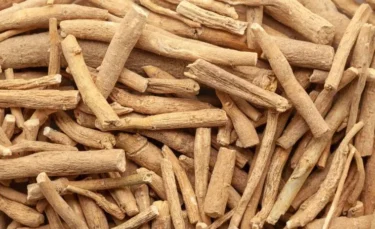
Ashwagandha is a well-known herb in traditional Ayurvedic practice, used for various purposes over many centuries. The name ‘Ashwagandha’ is derived from Sanskrit, where ‘Ashva’ means horse and ‘Gandha’ means smell, suggesting, in traditional texts, the vitality and strength associated with a horse.
It is sometimes referred to as ‘Winter Cherry’ or ‘Indian Ginseng’, and is particularly noted in Ayurveda for its traditional association with supporting the body’s resilience and overall vitality. The roots of the Ashwagandha plant are commonly used in Ayurvedic preparations5. The benefits of Ashwagandha are as follows:
Ashwagandha is a versatile herb and is traditionally available in various forms, including powders, tablets, and liquid extracts. It may be taken with or without food, depending on individual preference and practitioner guidance.
Caution: The use of Ashwagandha during pregnancy is not generally recommended unless under the supervision of a qualified medical professional. Individuals with thyroid-related conditions, particularly hyperthyroidism, should seek advice from a healthcare practitioner before using Ashwagandha or related preparations.
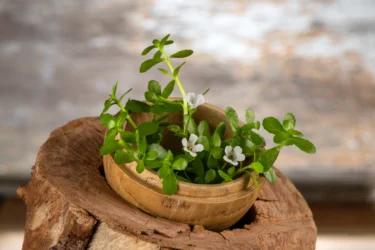
Brahmi, also known as Bacopa monnieri, is a well-regarded herb in traditional Ayurvedic practice. It has been traditionally used for its association with supporting cognitive health and mental clarity. The plant’s leaves are considered particularly valued in Ayurvedic literature and are often used in various preparations
Brahmi is also noted in traditional sources for its natural antioxidant and soothing properties, which have contributed to its continued use over generations.
Below are some traditionally associated uses of Brahmi7:
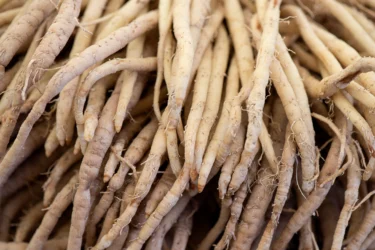
Shatavari also known as ‘queen of herbs’. is a medicinal herb with many health benefits. The presence of saponins contributes to its antioxidant properties. Shatavari is traditionally associated with supporting immune function and female reproductive health, as described in classical Ayurvedic texts.
Here are some benefits of Shatavari8:
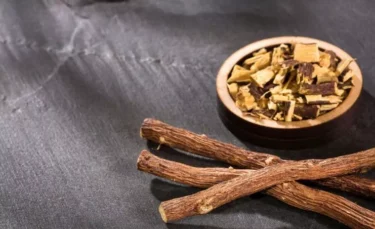
Liquorice has been used since ancient times in various traditional systems of medicine, including those of India, Greece, and Egypt. Owing to its naturally sweet flavour, it continues to be used in a range of preparations such as herbal teas, confectionery, capsules, and liquid extracts.
The benefits of Liquorice are as follows9,10:
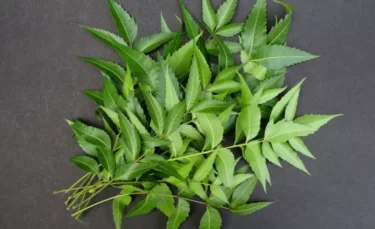
Neem has been mentioned extensively in classical Ayurvedic texts and is included in a large number of traditional formulations. It is often associated with supporting general hygiene, skin care, and internal balance in Ayurvedic practice11.
The benefits of neem are as follows:
Licorice root has been traditionally studied for its potential benefits in supporting oral hygiene. Some research17 suggests that compounds found in licorice may help in maintaining dental cleanliness and overall oral health. However, its use should be approached with caution and under the supervision of a qualified healthcare professional.
Dr. Rajeev Singh, BAMS
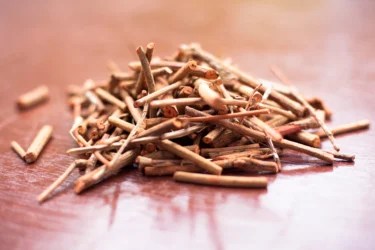
Manjistha is particularly noted for its long-standing use in Ayurvedic practices related to circulatory and skin wellness12. The benefits of Manjistha are as follows;
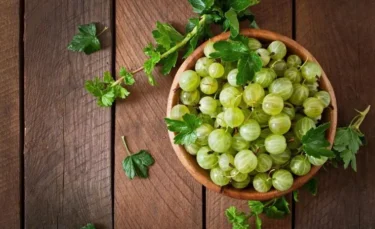
Amala is highly regarded in Ayurvedic tradition as a nourishing and revitalising fruit. It has naturally occurring antioxidants and helps support the body’s internal balance. The benefits of amala are as follows13:
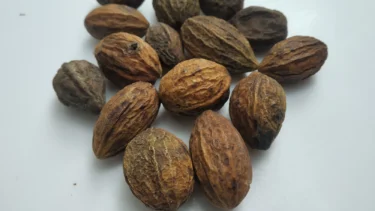
Haritaki is known as the ‘king of herbs’ in Ayurveda. In traditional Ayurvedic belief, Haritaki is associated with promoting internal balance and supporting clarity of mind, vitality, and overall well-being. The benefits of Haritaki are as follows:
Some studies18 suggest that Amla contains antioxidants and phytonutrients that may help support cognitive health. Its naturally high Vitamin C content is also believed to play a role in maintaining normal brain function.
Dr. Smita Barode, B.A.M.S, M.S.
Ayurveda offers a time-tested, holistic approach to health, rooted in balance and natural practices. When used under the guidance of qualified professionals, Ayurvedic herbs may support general well-being as part of a balanced lifestyle.
Also Read: Tamarind (Imli): Uses, Benefits, Side Effects and More!
Disclaimer: The information provided here is for educational/awareness purposes only and is not intended to be a substitute for medical treatment by a healthcare professional and should not be relied upon to diagnose or treat any medical condition. The reader should consult a registered medical practitioner to determine the appropriateness of the information and before consuming any medication. PharmEasy does not provide any guarantee or warranty (express or implied) regarding the accuracy, adequacy, completeness, legality, reliability or usefulness of the information; and disclaims any liability arising thereof.